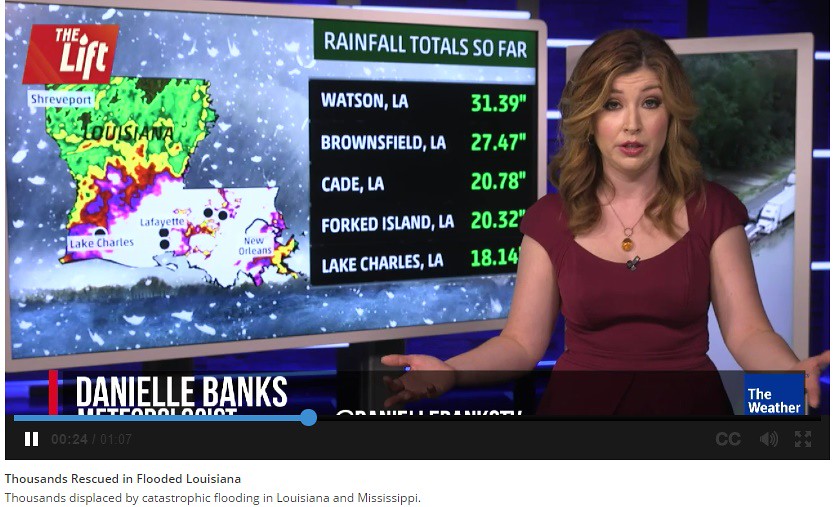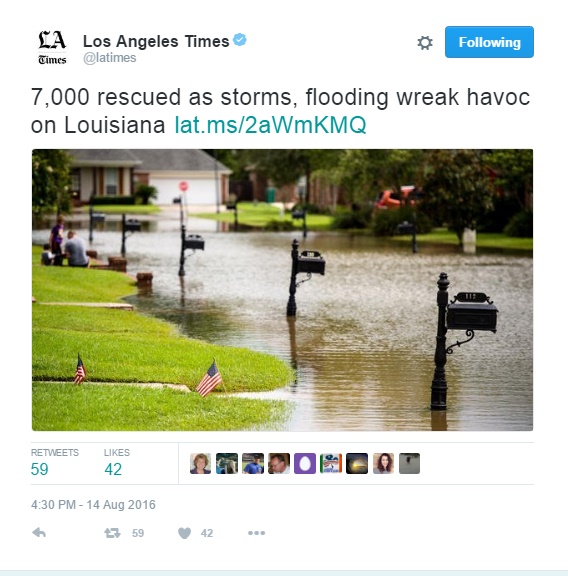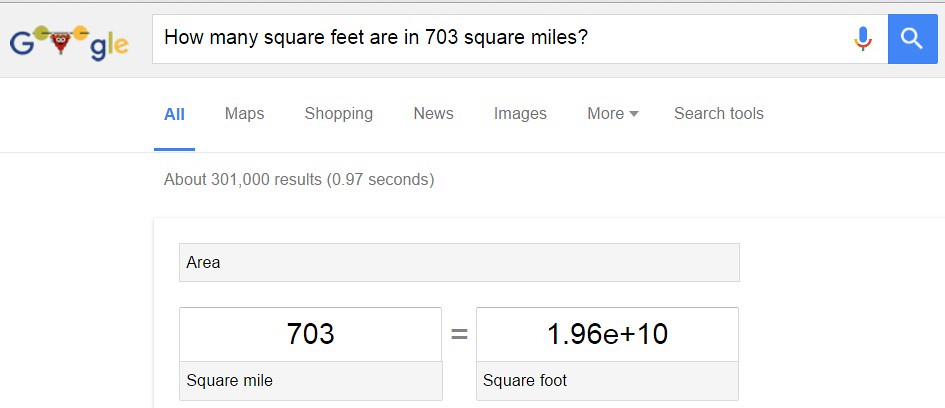In the picture above, the heaviest hit city is Watson with 31.39 inches of rain while the least hit city is still covered in 18.14 inches of rain. Quite a distribution of volume over a large region. Couple the distribution of rainfall shown above to the video taken from the news website 'NBC' titled "Louisiana Flood Displaces Thousands" shown below (less than a minute in length):
How do viewers process the destruction that is caused by such heavy rainfall?
Below are a few calculations to determine the extent of volume of rainfall hit in certain parts of Louisiana. By understanding the magnitude of rainfall in certain regions, a perspective can be drawn to understand the tragic amount of rain that has hit the state and displaced thousands of residents.
How Large Is Livingston Parish Louisiana?
Recently, an enormous amount of rainfall has fallen in various parts of the world in the last month. On this blog site, I have covered a few with calculations to provide a perspective: China, Mexico, Macedonia, and Elliot City (Maryland, USA). Along the same line of reasoning, the amount of water should be determined that fell on the geographic region -- Livingston Parish, Louisiana. With a volume of rainfall calculated, a direct comparison with other storms could be possible.
Here is a picture from the 'Twitter' account of the news site ''Los Angeles Times" shown below:
7000 people displaced? Oh my goodness. The amount of water must be significant. In order to calculate the volume of water, the dimensions of the geographic region of Livingston must be determined. Following along the same methodology of past posts on this site, let's ask Google.com. Here is the results shown below:
How about square feet?
Just by inspection of the magnitude of square feet -- 19.6 billion square feet -- immediately, you can reason that this storm is going to be large in comparison to previous storms mentioned. Not to mention the video shown above. With the area of Livingston expressed in square feet, the volume of rainfall can be calculated according to the expression shown below:
But wait, the reported amount of rain in Livingston was 21 inches of rain. How many feet is that? Just divide 21 inches/(12 inches/ft) = 1.75 ft. With the height now expressed in feet = 1.75 ft, the volume can be calculated as follows:
Wow! 34.3 billion cubic feet of water? No wonder the news accounts show cars floating down the streets in certain parts of the state. As usual, the number becomes a reality when expressed as a integer of a metric. Based on the past blog posts written about floods along with the enormity of the number above, the Mercedez Benz Superdome should suffice as a metric.
How Many Superdomes Could Be Filled With Rainfall?
The Superdome is shown below:
Source: Nwill21
How many Superdomes could be filled with 34.3 billion cubic feet of water?
In order to directly compare the volume of the Superdome to the volume of rainfall, the Superdome volume needs to be known. The volume taken from the 'Wikipedia' site is listed at 37 million cubic feet of interior volume. Now, that we have two numbers expressed in the same units (cubic feet), a simple division of the two numbers will yield the number of Superdomes which could be filled as shown below:
Oh my. The results of the calculations indicate that the total number of Superdomes which could be filled with the volume of rainfall = 34.3 billion cubic feet would be 274 Superdomes. Naturally, the number is large with such a enormous value of cubic feet of rain. In case you (the reader) view large volumes in units of gallons with a better perspective, the conversion of units from 'cubic feet' to 'gallons' is shown below:
The total number of gallons of rainfall in the region of Livingston Parish over the course of a few days is equivalent to 256 billion gallons. Amazing. Again, how much water is in the sky? Looking at this large number, a person has to view the atmosphere above them in a different light. How much more water is in the air in 'humid' conditions?
To put the volume of rain into perspective, a direct comparison can be made with other storms. Here are the following storms with the number of Superdomes in parentheses: China (4,640), Huauchinango Mexico (6.7), Macedonia(82), and Elliot City-Maryland-USA(56).
Conclusion...
Looking at volume alone for the storm that has hit Louisiana is astonishing. Next, directly comparing the number of Superdomes which could be filled provides a perspective of volume that is still difficult to grasp. I have trouble visualizing 274 Superdomes. Although, casting the volume in comparison to other recent storms helps slightly. That, of course, is a relative comparison.
Forecasting the amount of rain is a relative number too. But through the calculations shown above, the reader can gain a better perspective to match to the tragedy that is shown in the video above. It is difficult to imagine a car floating down the street or a boat rescuing people from their houses. Although, when you think of the volume of 274 Superdomes releasing all of the water contained in them and spreading that water over the area, the pictures from news accounts a cast into a perspective. Until next time, have a great day!









No comments:
Post a Comment